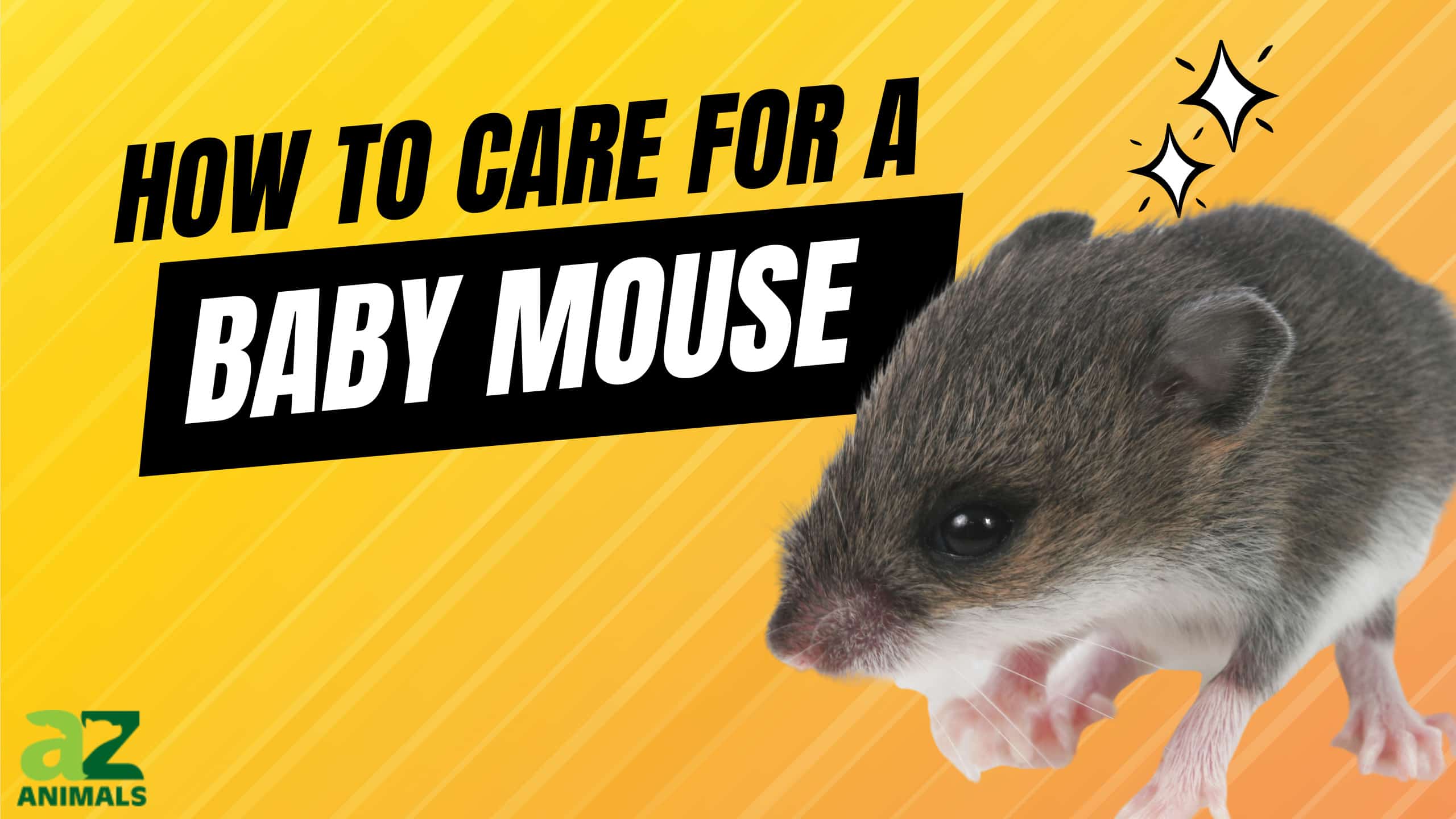Few things tug at the heartstrings like discovering a baby animal who appears abandoned or orphaned. This is especially true for small mammals like mice. Finding and caring for a wild animal can be a challenge. Time can be a matter of life and death. Our best intentions might cause more harm than good. But any animal lover will tell you: doing nothing isn’t an option. If you do encounter a baby mouse, follow these steps to ensure it’s cared for properly.
Step 1: Keep an Eye on the Nest
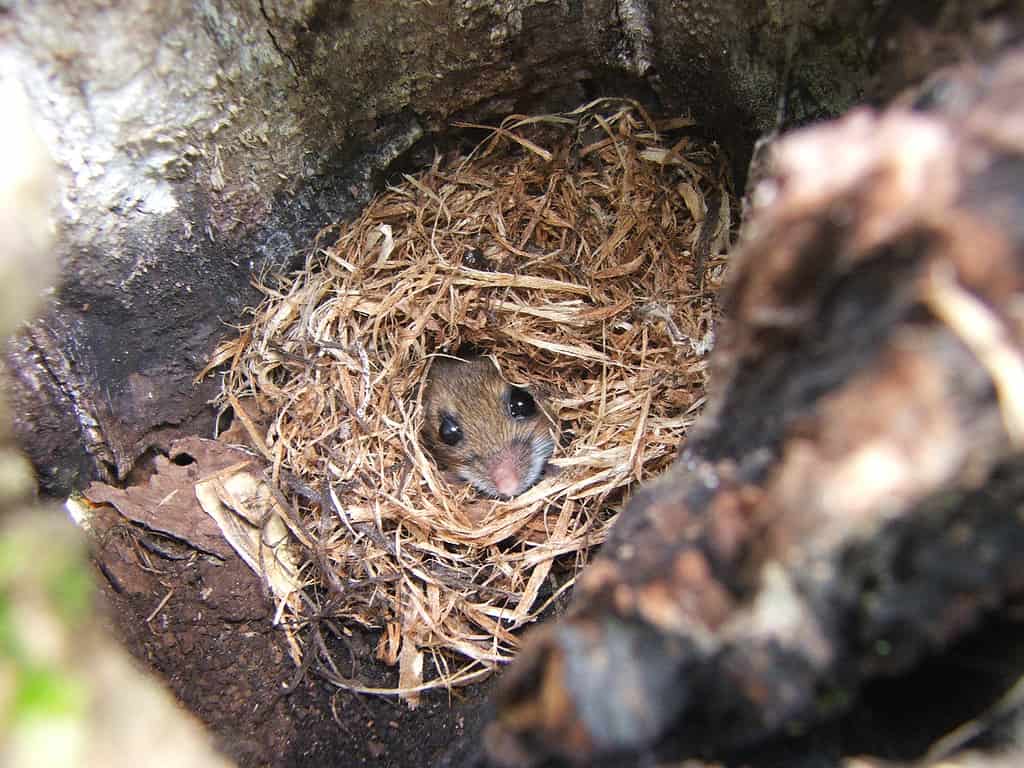
The mouse’s nest is the animal’s lifeline. It’s where they keep their young safe and warm, and where they store food.
©db_beyer/ via Getty Images
Stumbling upon a baby mouse who appears all alone and vulnerable can be a shock. Your first instinct might be to scoop it up and whisk it home, but it’s important to be sure the mouse is, indeed, abandoned or orphaned. The mouse’s mother might be out foraging for food or hiding until you’ve left.
If the baby mouse is still in its nest or safely out of immediate danger, check on it every couple of hours to see if there’s evidence the mother has returned. After checking two or three times and finding the mouse still alone, you can step in to help.
If you discover the baby mouse out of its nest and exposed to potential predators, create a makeshift nest from a paper cup or wrapped newspaper. Keep the nest nearby in case the mother returns looking for her baby.
Step 2: Contact a Wildlife Rehabilitator
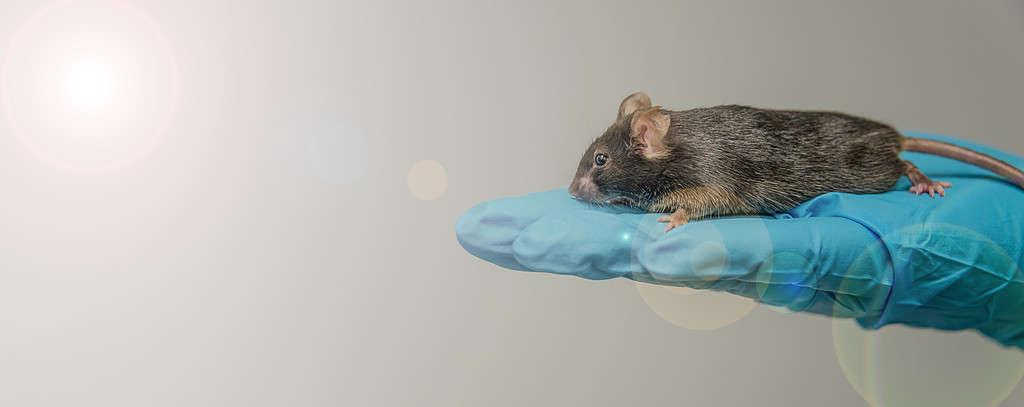
While not required, a degree in biology or ecology can be a significant advantage to a wildlife rehabilitator. It gives them the ability to understand and handle wildlife incidents most effectively and humanely.
©Neurobite/ via Getty Images
Once you’ve confirmed that the baby mouse is alone and out of immediate danger, contact a licensed wildlife rehabilitator. As much as you’d like to help nurse a baby animal back to health, it’s often best to bring in professional help. Baby mice, in particular, require care around the clock and run the risk of life-threatening complications due to their neonatal diet. You can often find information through county or state websites. Otherwise, there are lots of organizations that provide expertise and resources:
- Animal Help Now: This non-profit is a resource available 24/7 for any emergencies or questions related to wildlife.
- National Wildlife Rehabilitators Association (NWRA): The organization is designed to uplift the profession of wildlife rehabilitators so that more people know about the valuable work they do to preserve natural ecosystems.
- Humane Wildlife Control Society: Supported by government agencies like the National Wildlife Research Center, the society aims to educate and enlighten anyone looking to find humane ways of handling wild animals.
Step 3: Protect Yourself
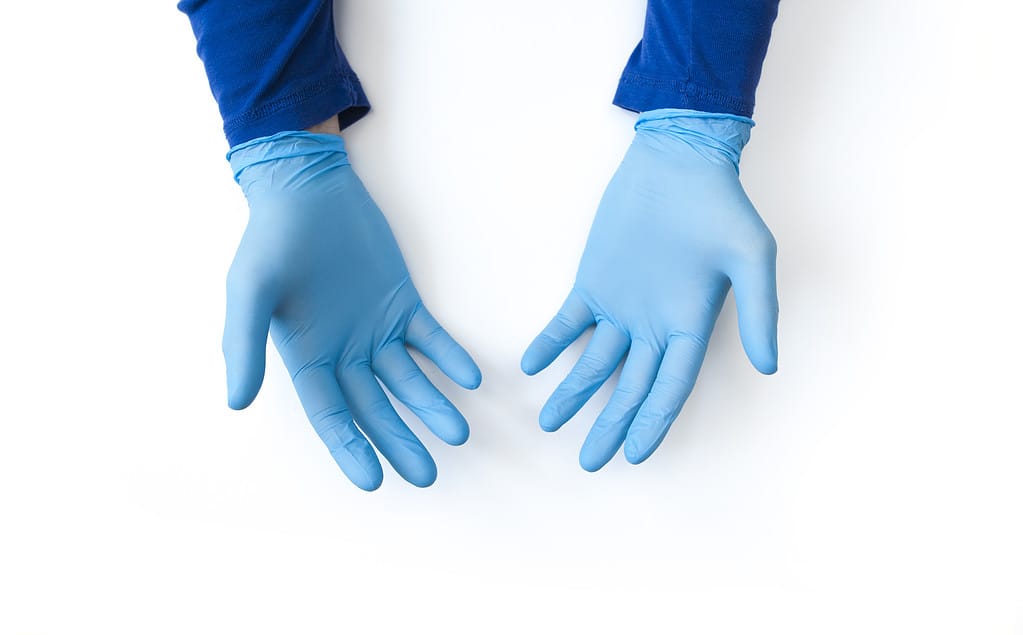
When encountering any wild animal, it’s best to protect yourself from possible infection. Mice and other rodents can spread disease to humans, including Hantavirus which can result in serious ailments.
©timonko/ via Getty Images
While you wait to hear back from a wildlife rehabilitator, you may need to move the baby mouse to a safer place. It’s important to protect yourself first and foremost. It’s rare for a baby mouse to harbor any harmful illness, but it’s still possible. Make sure that you wear gloves and wash your hands after each time you handle the mouse.
Step 4: Handle With Care
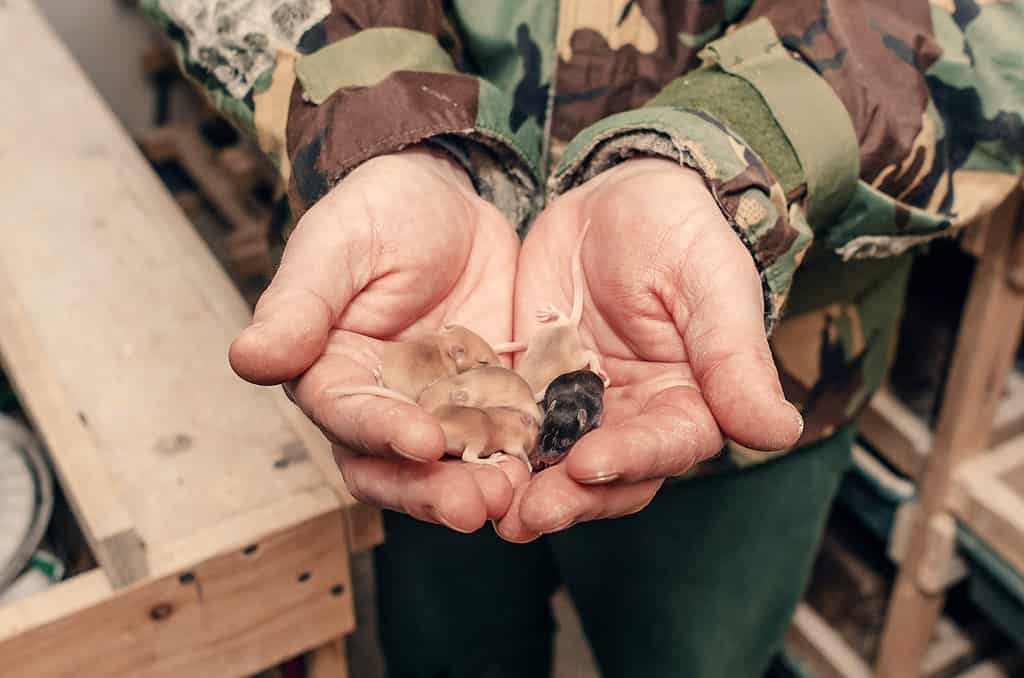
Baby mice are such fragile creatures: they’re born blind with delicate digestive systems. Typically, a mouse’s eyes will open about a week and a half after birth.
©todaydesign/ via Getty Images
Depending on how young the baby mouse is, make sure to handle it delicately. They likely won’t squirm or try to run away like an adult might, but you still want to have a firm grasp so that you don’t drop the mouse.
Step 5: Talk to a Vet

Most veterinarians have knowledge or resources to get mice and other rodents the care they need. Vets who specialize in treating diseases in rodents are called Laboratory Animal Veterinarians.
©AnnaStills/ via Getty Images
If you haven’t been able to reach a wildlife rehabilitator or other animal control professional, contact your local vet. This is especially crucial if you believe the baby mouse is injured or sick. Call ahead to make sure they’re able to treat mice, and, if not, they likely can point you in the right direction. While vets typically specialize in pets and domestic animals, they will be valuable resources for you to take the next steps in the mouse’s care.
Step 6: Create a Safe and Warm Shelter

When caring for a baby mouse, try to think about how its mother might care for it. Mimicking the warmth from the mother’s body can be essential.
©bozhdb/ via Getty Images
Remember: a baby mouse requires around-the-clock care. If it looks like a professional won’t be able to assist you that day, you’ll need to start caring for the baby mouse like its mother. You can start by giving it warmth.
If you haven’t set up your makeshift nest for the mouse yet, you can put together a soft, safe place for the mouse to live. It could be a cardboard box, an old T-shirt wrapped around the baby mouse, or even a cage. Next, include a heating pad on a low setting for the mouse to rest on. Another heating option is filling a sock with rice and microwaving it for about 30 seconds. Check on the heating source regularly so that the mouse stays warm without burning itself.
Step 7: Keep Children or Pets Away
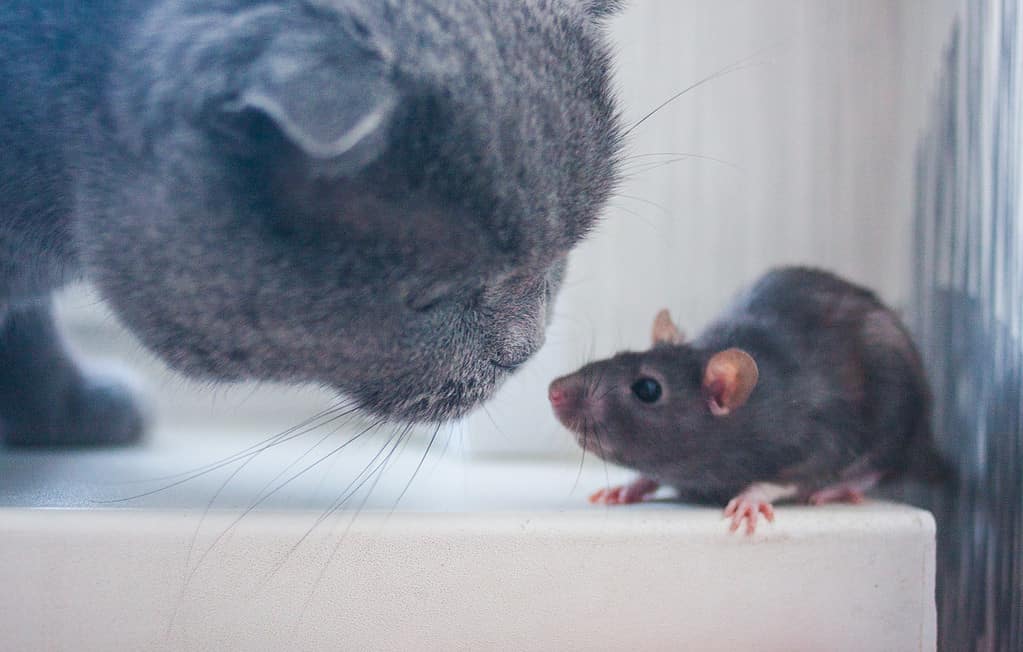
Not only is it best to keep children and pets separate from a baby mouse for the mouse’s well-being, but it’s also for the safety of your loved ones.
©Kseniia Glazkova/ via Getty Images
Make sure that your nest is in a quiet place indoors, where small children or pets don’t have access to it. The baby mouse is likely experiencing a lot of stress, so anything you can do to provide a calm, safe environment will be helpful to its well-being. While our domestic animals might feel soothed by our interactions with them, wild animals will not. Being handled or petted might only aggravate its stress levels.
Step 8: Feeding

Baby mice start off with a liquid diet. As their eyes open and they mature, they begin to eat more solid foods.
©CRobertson/ via Getty Images
Feeding a baby mouse can get tricky. If the mouse has suffered an injury or trauma you can’t detect, its delicate digestive system may not handle eating. This could cause bloating, shock, and even death. This is why it’s so important to use the expertise of a wildlife rehabilitator or vet.
With that said, the baby mouse will need to eat and drink about every two hours. That means you’ll have to use your best judgment and offer it food similar to what it’s used to. Its mother would provide milk, so you’ll need to find an appropriate alternative. Here are a few options that can substitute for the mother’s milk:
- Diluted baby formula made with soy.
- Diluted kitten formula.
- Goat’s milk.
- Puppy milk replacer.
An eyedropper or syringe is ideal for feeding the warmed milk to the baby mouse. You can also use the end of a clean paintbrush. Remember to be patient and feed the mouse as much as it’s willing to consume. Do not force-feed the baby mouse.
Another clue to help determine whether a baby mouse needs to be fed is whether it has a “milk belly”. A subtle white band or patch on the mouse’s abdomen indicates that it’s recently been fed.
Step 9: Help It With the Bathroom
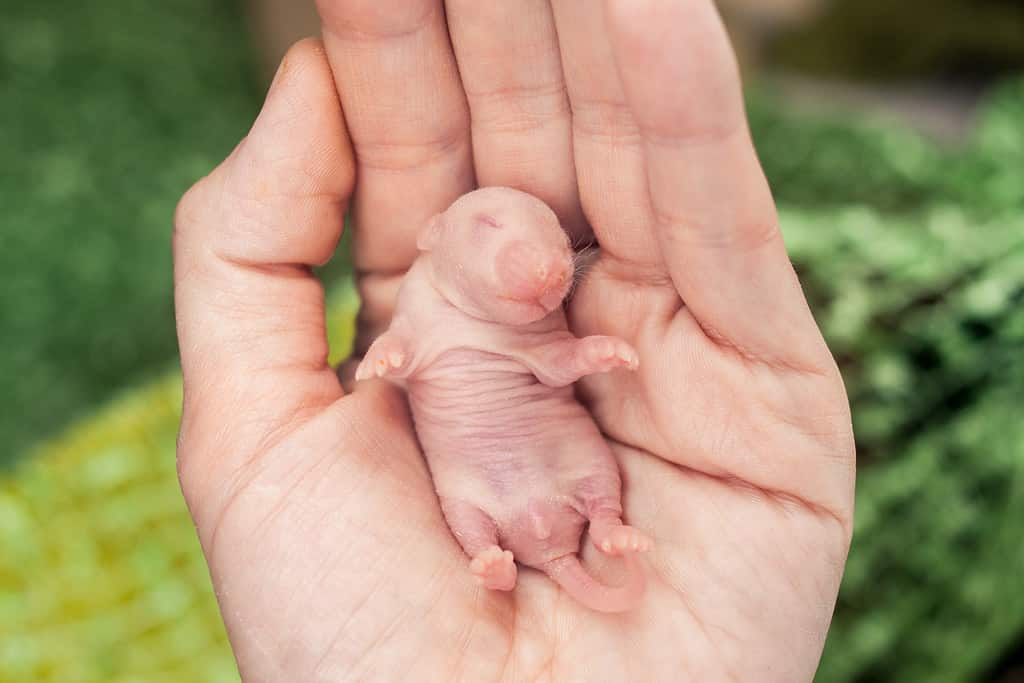
Baby mice typically weigh only 0.5g at birth. Handling them requires extra care.
©Kseniia Glazkova/ via Getty Images
Similarly to burping a baby, a mouse needs help after it eats. In the case of the baby mouse, though, it needs help urinating and defecating. Its mother would lick the baby, signaling them to go to the bathroom. To mimic this behavior, use a warm wet cloth or your finger and gently move it over the mouse’s genitals until it has gone.
Continue to follow these steps until you’re able to reach a wildlife professional who can provide any additional care or medical attention.
Step 10: Adopt Small Habits to Prevent Wildlife Accidents

Mice and other rodents tend to seek our houses, cars, and even garbage cans as safe places to live. Stay mindful of how to humanely deter them from building nests around your home.
©KatarzynaBialasiewicz/ via Getty Images
Regardless of how long you care for the baby mouse, there are additional steps you can take to help prevent encounters with abandoned or orphaned wildlife. The first is to be mindful of your waste.
It’s easy for us to toss a food container or other piece of trash in our trash or recycling bin and forget about it. But if you make sure that your containers are securely sealed, that food or drinks are rinsed thoroughly, and that you don’t litter, you’ll reduce (even remove) the possibility of attracting wild animals and putting them in harm’s way.
| Steps | Actions to Care for Baby Mouse |
|---|---|
| Step 1 | Keep an Eye on the Nest |
| Step 2 | Contact a Wildlife Rehabilitator |
| Step 3 | Protect Yourself |
| Step 4 | Handle With Care |
| Step 5 | Talk to a Vet |
| Step 6 | Create a Safe and Warm Shelter |
| Step 7 | Keep Children or Pets Away |
| Step 8 | Feeding |
| Step 9 | Help It With the Bathroom |
| Step 10 | Adopt Small Habits to Prevent Wildlife Accidents |
How to Care For a Baby Mouse: Conclusion
It can be alarming and even heartbreaking to see a wild baby animal left alone. And while it may feel like you’re going against your best judgment, remember to trust animals and their resilience. Practice your ability to observe and educate yourself on who’s the best to handle a wildlife emergency in your community. That could be all you need to save an animal’s life.
Thank you for reading! Have some feedback for us? Contact the AZ Animals editorial team.

